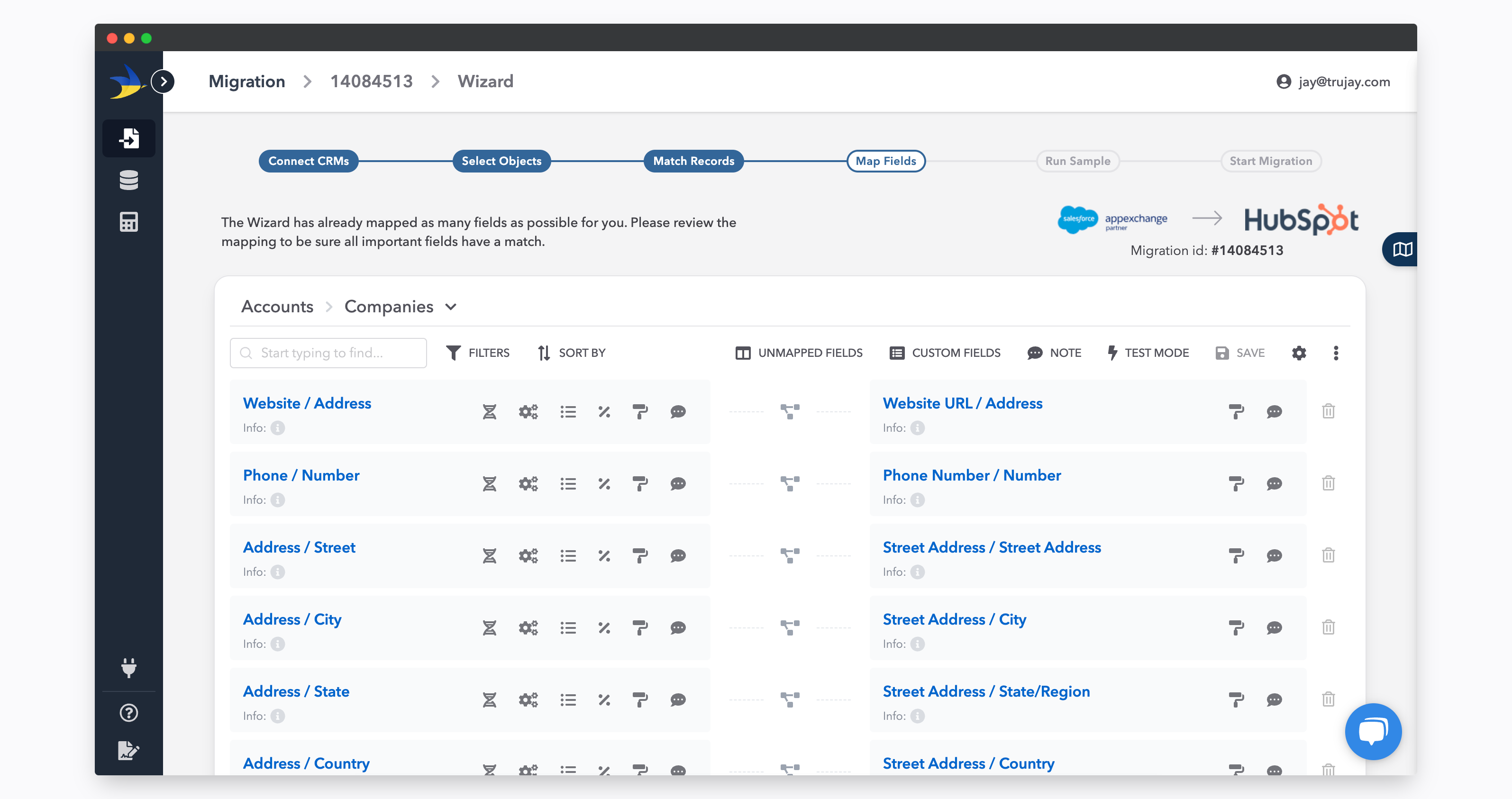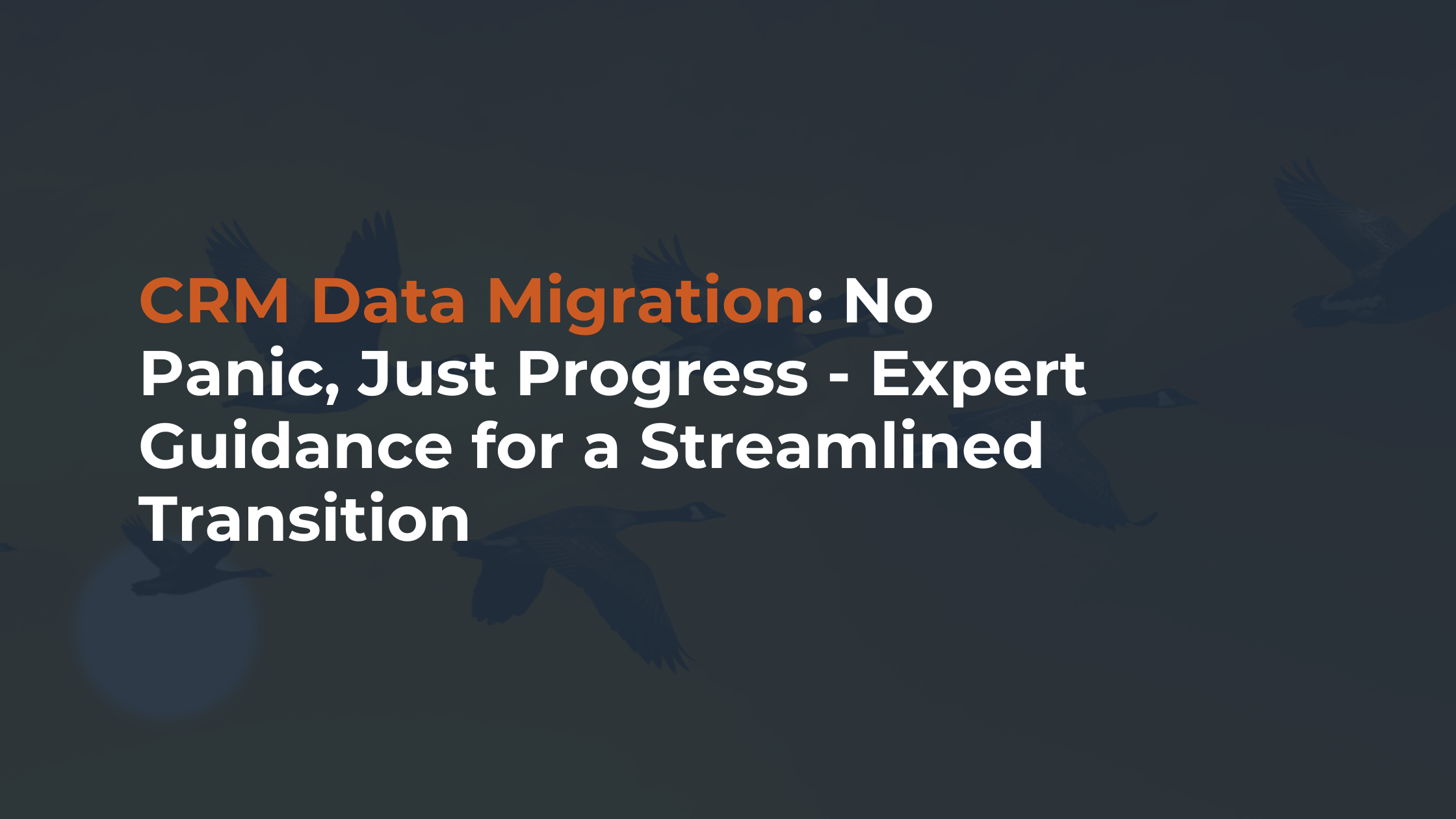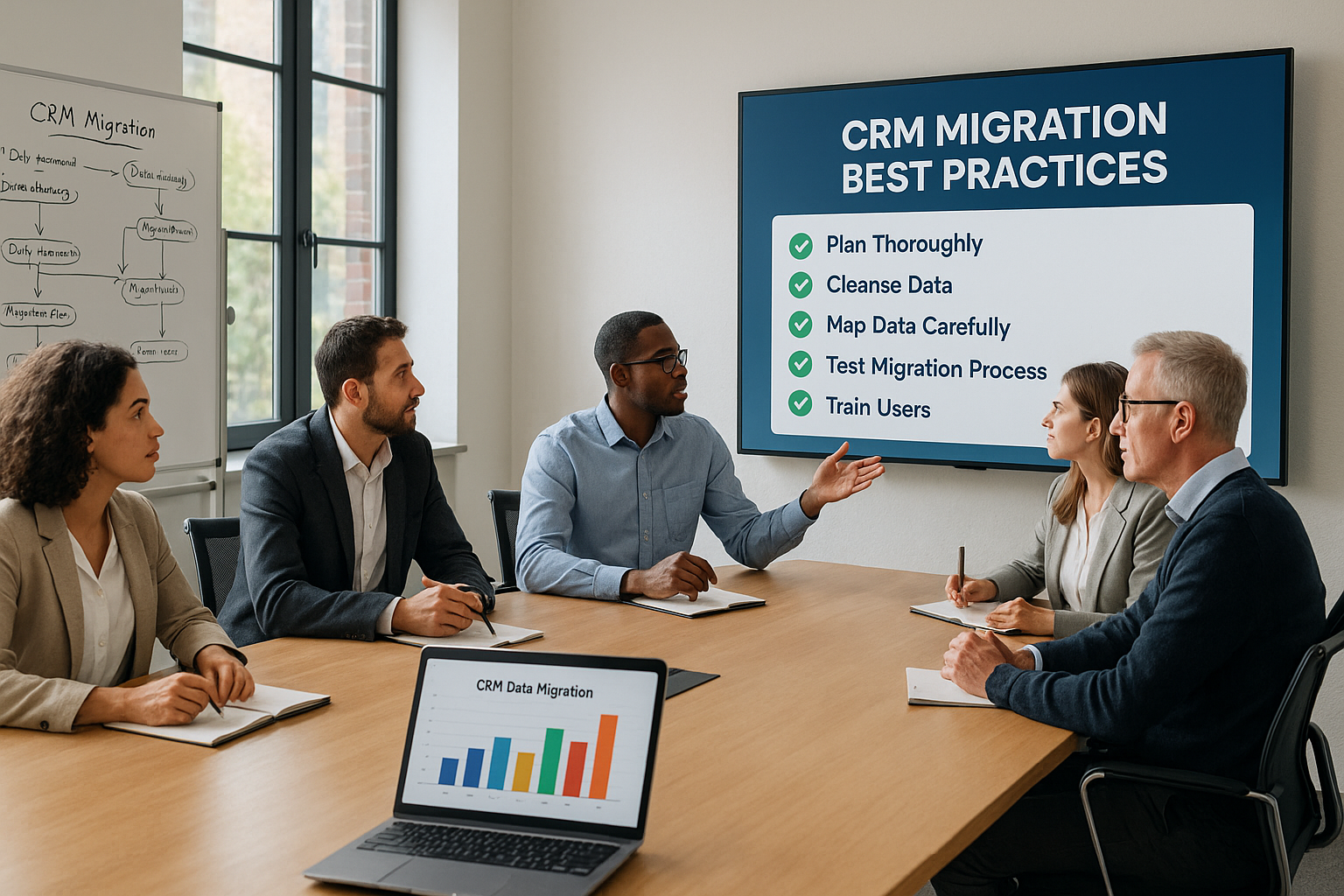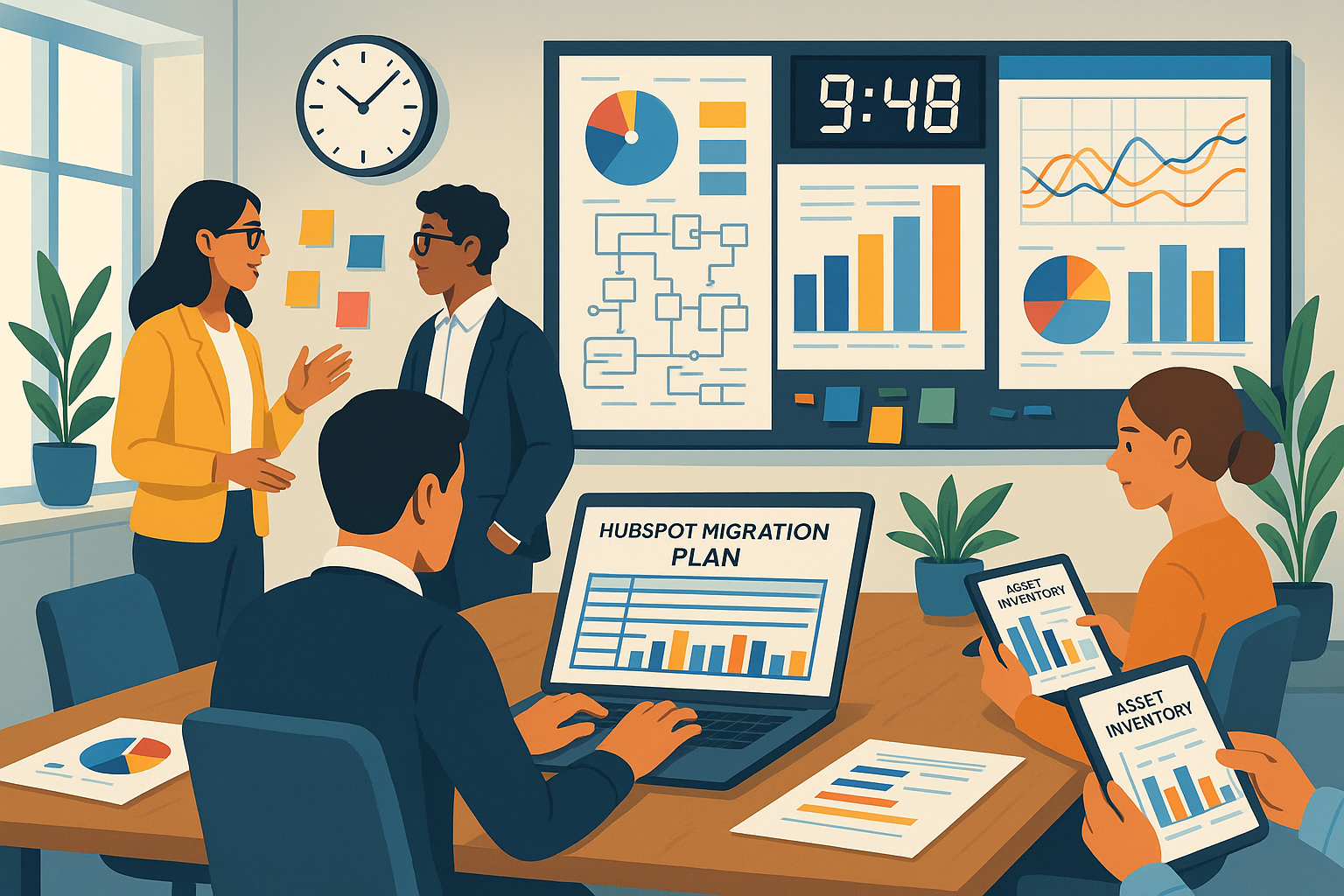CRM Data Migration
CRM data migration involves the process of moving data from an existing CRM system to a new CRM platform. It is a critical aspect of transitioning to a new CRM system, ensuring that all valuable customer data is seamlessly transferred to the new platform. In this article, we'll explore the essential components of CRM data migration and the strategies for a successful transition.
Migrating to a New CRM Platform
When migrating to a new CRM platform, it's crucial to develop a comprehensive migration plan. This plan should outline the steps involved in transferring data, including data mapping, extraction, transformation, and loading into the new system. It's essential to identify the key stakeholders involved in the migration process and allocate the necessary resources for a smooth transition.
One of the primary challenges of data migration is ensuring the accuracy and integrity of the data throughout the process. Data may exist in different formats and structures within the current CRM, requiring careful mapping and validation to ensure a successful migration without any loss or corruption of data.
Mapping and migrating data involve aligning the data fields from the old CRM to the corresponding fields in the new CRM system. This process requires in-depth knowledge of both platforms and may involve data cleansing and transformation to fit the new data schema.
Successful CRM Data Migration Strategy
Understanding the intricacies of the new CRM system is crucial for a successful data migration. By comprehensively understanding the data structure and format of the new CRM, organizations can effectively plan and execute the migration process.
Implementing a data migration plan involves establishing a timeline, setting achievable milestones, and ensuring that all data is accurately migrated to the new system. This may involve the use of specialized migration tools and methodologies to streamline the process and minimize any potential disruptions to the business operations.
Avoiding data loss during migration is a critical consideration. It's essential to conduct thorough testing and validation of the migrated data to identify and address any discrepancies or anomalies before completing the migration process.
CRM Data Migration Checklist
An essential step in CRM data migration is assessing the current CRM data. This involves identifying the types of data stored, evaluating its quality, and determining the relevance of each data set for migration to the new CRM platform. Additionally, understanding the data ownership and access rights is crucial in ensuring a smooth migration process.
Choosing the right CRM software is pivotal in determining the success of the migration project. Organizations should carefully evaluate the features, scalability, and compatibility of the new CRM platform to meet their business requirements and facilitate a seamless data migration process.
Executing a successful migration process involves meticulous planning, close collaboration with the CRM users, and rigorous testing to verify the accuracy and integrity of the migrated data. Establishing clear communication channels and providing adequate training to users on the new CRM system can facilitate a successful transition.
Common Challenges in CRM Data Migration
Data mapping issues often arise during CRM data migration, especially when the data structures and formats differ between the old and new CRM systems. Addressing these discrepancies requires careful analysis and mapping of data fields to ensure a smooth transition.
Data integrity and consistency are critical considerations during CRM data migration. Organizations must ensure that the migrated data retains its accuracy, completeness, and consistency to maintain the trust and reliability of the information within the new CRM system.
Managing existing data during migration involves identifying redundant, obsolete, or trivial data and determining the appropriate approach for handling such data. This may involve archiving, merging, or purging redundant data to streamline the migration process and optimize the data within the new CRM system.
Migrating Data from One CRM to Another
Understanding the data migration process is fundamental to a successful transition from one CRM to another. It involves a comprehensive understanding of the data structures, relationships, and dependencies within the existing CRM, as well as the mapping and transformation requirements for the new CRM platform.
Ensuring a smooth transition involves meticulous planning and execution of the data migration process, minimizing any disruptions to the business operations and customer interactions during the transition phase. It requires proactive monitoring and resolution of any potential issues that may arise during the migration process.
Dealing with data transformation is a critical aspect of migrating data from one CRM to another. It involves converting data formats, restructuring data elements, and standardizing data attributes to align with the requirements of the new CRM system.
Building a Bridge for Your Valuable Customer Data
Moving to a new CRM platform presents an exciting opportunity to enhance your customer relationships and streamline business processes. However, bridging the gap between your existing data and the new system can be a daunting task. This is where effective CRM data migration comes in, ensuring a smooth and successful transition without compromising valuable customer information.
Beyond the Essentials: Deep Dives and Actionable Insights
While your existing content lays a solid foundation for understanding CRM data migration, let's delve deeper into specific aspects and equip you with actionable insights for a seamless transition.
1. Demystifying the Migration Maze:
Data Mapping Decoded: Imagine your data as puzzle pieces—data mapping helps them fit perfectly into the new system's framework. This intricate process involves aligning fields, formats, and structures between the old and new CRMs. Here's how you can master this art:
- Identify Corresponding Fields: Carefully map each data field in the old CRM to its equivalent in the new system. Pay close attention to custom fields and ensure proper translation.
- Format Transformations: Different CRMs may interpret data formats differently. Address date formats, currency symbols, and other variations to avoid inconsistencies.
- Relationship Rebuilding: Map out relationships between entities like contacts, accounts, and opportunities, ensuring their connections remain intact in the new CRM.
Tools of the Trade: Embrace specialized data migration tools that automate mapping tasks, identify discrepancies, and streamline the process. Popular options like Trujay (app.trujay.com) offer intuitive interfaces and robust capabilities to make your migration smoother.

2. Tackling Transformation Challenges:
Data isn't always a perfect fit. Transformation steps become crucial when your existing data needs adjustments for the new system. Here are common scenarios and solutions:
- Data Cleansing: Scrub your data for duplicates, inconsistencies, and outdated entries. Eliminate obsolete information to improve data quality and optimize storage in the new CRM.
- Standardization: Ensure consistency in data formats, such as phone numbers, addresses, and date formats, for efficient analysis and reporting in the new system.
- Enrichment: Enhance your data with additional information from external sources or internal databases to personalize customer interactions and boost marketing efforts.
3. Keeping Security at the Forefront:
Data security is paramount throughout the migration process. Take these steps to safeguard your valuable customer information:
- Comprehensive Access Control: Define user roles and permissions within the new CRM, ensuring only authorized personnel access confidential data.
- Encryption Measures: Implement robust data encryption protocols to protect data during transfer and storage in the new system.
- Compliance Considerations: Adhere to industry regulations and data privacy laws as you handle customer data during the migration process.
4. Empowering Your Team for Success:
Migrating to a new CRM is not just about data; it's about people. Here's how to make your team comfortable and productive in the new environment:
- Early Engagement: Involve key stakeholders and CRM users in the planning and training process. Addressing their concerns and questions fosters ownership and smooth adoption.
- Comprehensive Training: Provide your team with thorough training on the new CRM's features, functionalities, and user interface. Utilize hands-on practice and interactive sessions to boost confidence and proficiency.
- Ongoing Support: Offer continuous support and troubleshooting assistance during the transition phase. This ensures users feel comfortable approaching any challenges they encounter with the new system.
5. Beyond the Migration: Optimizing the New Frontier:
Once your data is successfully migrated, don't stop there! Leverage the capabilities of your new CRM to optimize your customer relationships and business processes:
- Data-Driven Decisions: Analyze your migrated data to gain deeper customer insights and identify trends. Use this knowledge to personalize marketing campaigns, tailor sales strategies, and improve customer service experiences.
- Automation Workflow: Automate repetitive tasks like lead scoring, email follow-ups, and reporting to free up your team's time for more strategic initiatives.
- Continuous Improvement: Monitor your new CRM and adapt your processes as needed. Encourage user feedback and implement improvements to ensure your system remains efficient and aligned with your evolving business needs.
Remember, successful CRM data migration is a journey, not a destination. By carefully planning, addressing challenges, and empowering your team, you can bridge the gap seamlessly and unlock the full potential of your customer data in the new CRM environment. Let Trujay (app.trujay.com) be your trusted partner in making this journey smooth and successful.
Have a migration use case you want to discuss?







